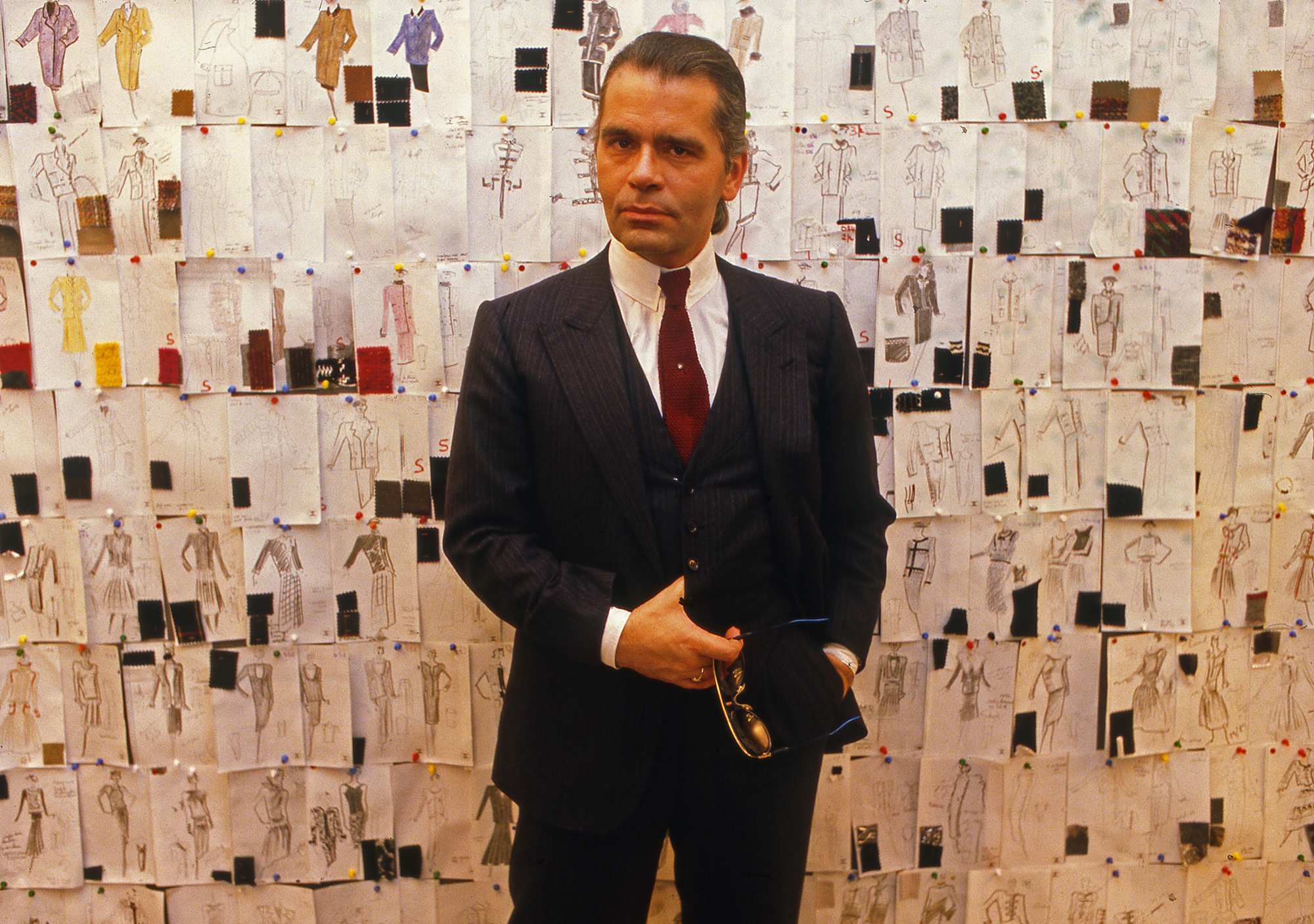
You don't have to know anything about fashion to have heard of iconic designer Karl Lagerfeld, who helmed luxury fashion house Chanel for more than three decades.
"I do my job like I breathe," Lagerfeld told the New Yorker in 2007. And he did so with a staggering work ethic. "I only want to do what I have to do: fashion, photography, books. And that's all."
As with his designs, he carefully crafted his own image by blending past and present: Snowy white mane and ponytail like a powdered 18th-century periwig; aviator sunglasses; a high, starched white collar; black, fingerless biker gloves worn with multiple silver rings.
(Of course, he was a celebrity for so long that we forget that he changed that image more than once. In a striking Helmut Newton portrait from the early 1970s, his hair is jet black, he has a thick, piratical beard and sports a rimless monocle. For almost 20 years, he was seldom seen without a Japanese fan, swiftly spread and fluttered for photographers. Like artist Andy Warhol, Lagerfeld had an instinct about his own image.)
Lagerfeld was born in Hamburg, Germany, in 1933. In later life, he would be coy about his date of birth, usually trimming at least five years off of his age.
In the early 1950s, he saw his first fashion shows in Hamburg, including one by Christian Dior. With his mother's encouragement, he decided to leave Hamburg for fashionable Paris. In 1954, he won a womenswear design competition and joined the haute couture house of Pierre Balmain. Three years later, he moved to the House of Patou. After that, he began freelancing for Chloé, and by 1967 counted Fendi among his clients.
His decision to accept an offer to be artistic director at Chanel in 1983 elevated him to an infinitely higher fashion sphere, and transformed both his and the brand's fortunes. "When I took on Chanel, it was a sleeping beauty. Not even a beautiful one. She snored," he said in "Lagerfeld Confidential," a 2007 documentary. "So I was to revive a dead woman."
Lagerfeld acknowledged the brand's history but treated it irreverently. To survive "you have to cut the roots to make new roots," he told the New Yorker. "Because fashion is about today. You can take an idea from the past, but, if you do it the way it was, no one wants it."
Read more about how Lagerfeld redefined fashion.
All rights reserved for this news site cnn and under his responsibility



